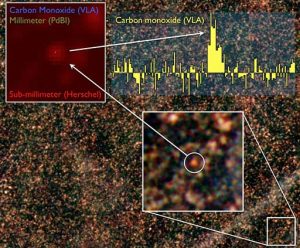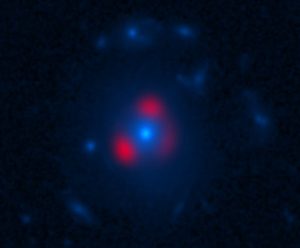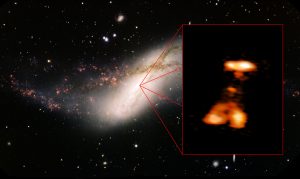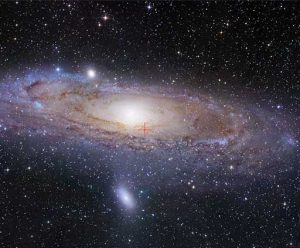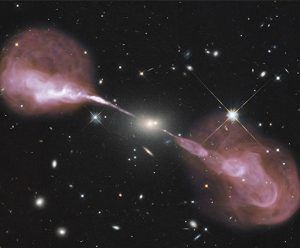Astronomers using a world-wide collection of telescopes have discovered the most prolific star factory in the Universe, surprisingly in a galaxy so distant that they see as it was when the Universe was only six percent of its current age.
ALMA Finds ‘Monster’ Starburst Galaxies
Astronomers using the Atacama Large Millimeter/submillimeter Array telescope have discovered starburst galaxies earlier in the Universe’s history than they were previously thought to have existed.
Mapping the Milky Way
Astronomers have discovered hundreds of previously-unknown sites of massive star formation in the Milky Way, including the most distant such objects yet found in our home Galaxy.
Massive Outburst in Neighbor Galaxy
The surprising discovery of a massive outburst in a neighboring galaxy is giving astronomers a tantalizing look at what likely is a powerful belch by a gorging black hole at the galaxy’s center.
Microquasar Found in Neighbor Galaxy, Tantalizing Scientists
For the first time, astronomers have found a microquasar — a black hole devouring material from a companion star — in a galaxy beyond our own Milky Way.
Image Release: A Radio-Optical View of the Galaxy Hercules A
Spectacular jets powered by the gravitational energy of a supermassive black hole in the core of the elliptical galaxy Hercules A illustrate the combined imaging power of two of astronomy’s cutting-edge tools, the Hubble Space Telescope’s Wide Field Camera 3, and the recently upgraded Very Large Array radio telescope in west-central New Mexico.






